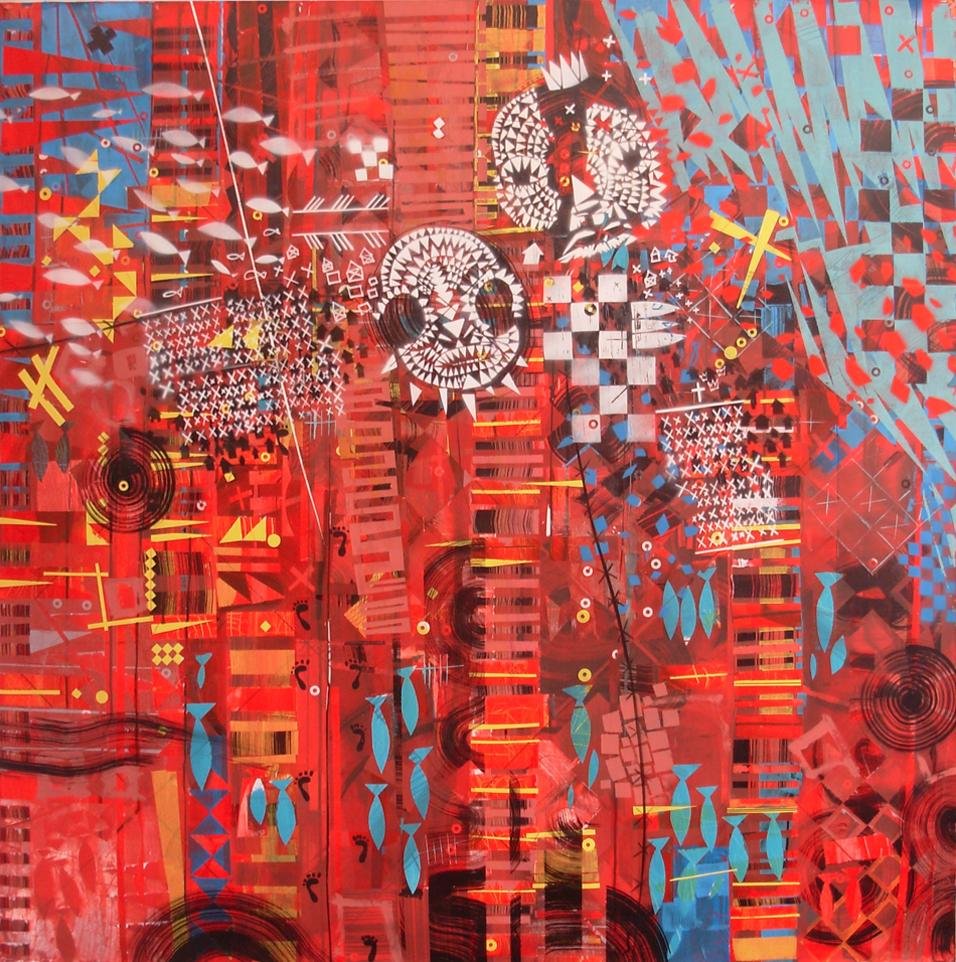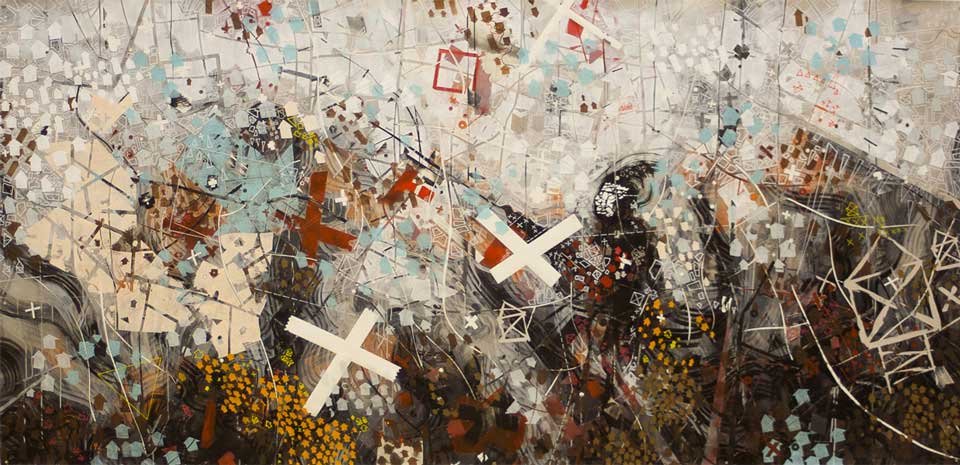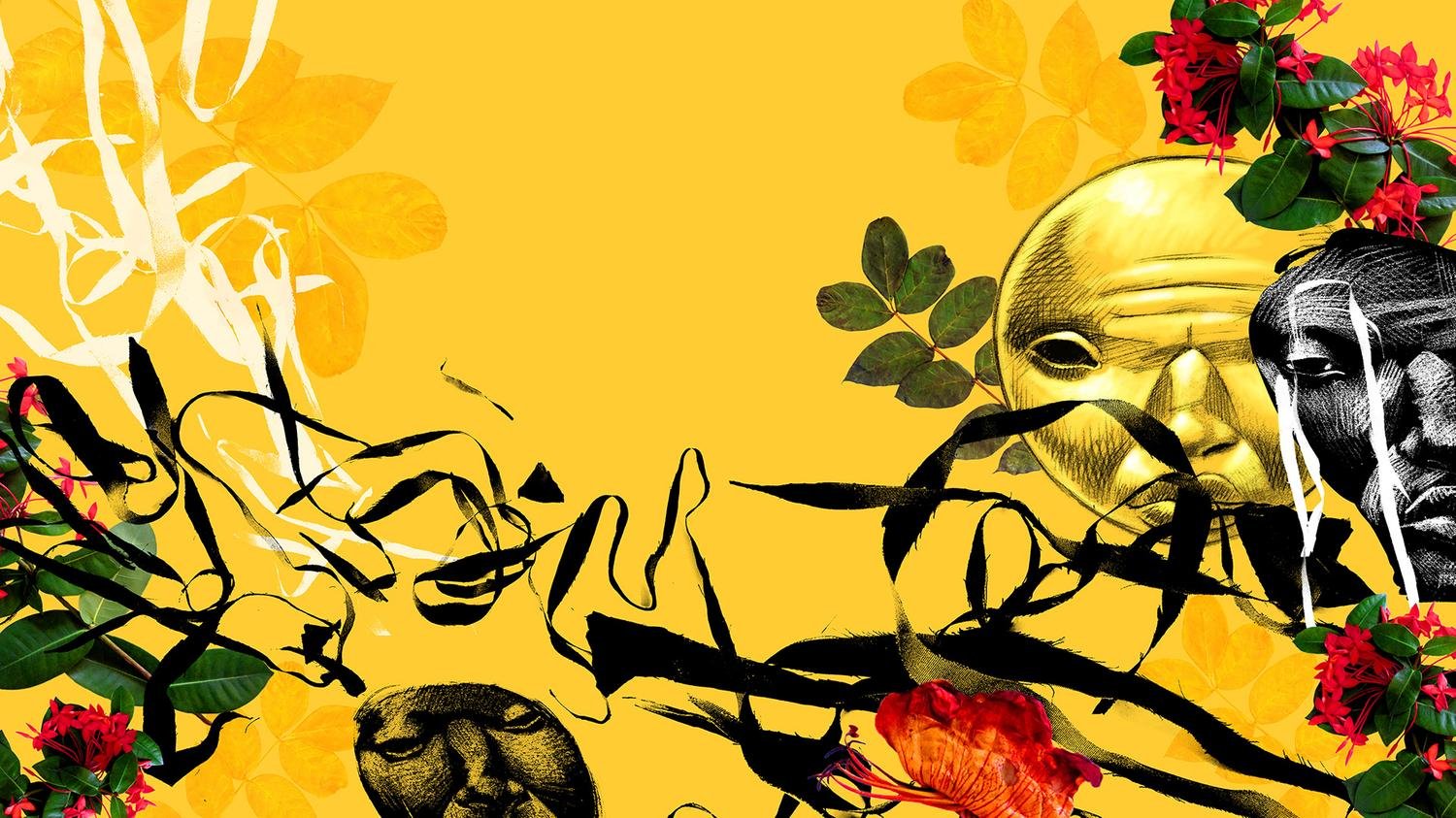Wilson Borja: The Art of Black Liberation in Colombia
Wilson Borja is a Bogotá-based illustrator and graphic designer, and professor. His work focuses on expanding knowledge about people of African descent across the Diaspora. His collective, AguaTurbia, addresses issues and problems related to the construction of race in their community, in the Afro-Colombian Social Movement, and the wider African Diaspora through art. The collective formed from the need to reflect on their artistic practices, the conditions that are presented to them in Bogota, and the possibilities of developing their production. The collective is rooted in a tradition of thought from generations of Afro-descendant creative and intellectuals committed to the liberation of Black communities and the vision of a liberated future produced by Afro-descendant artists.
In this interview, Borja provided the ISE-DA team with a further background into his collective and how he uses his art to connect with other Afro-descendant artists.
Learn more about his work here.
Well, I think the base of my work is drawing, it's always something I always enjoy. Probably not the for the last four months. I found out about [my love for drawing] when I was about 17. It was through drawing I was able to find other ways to express myself because illustration is so commercial. I always wanted to speak my language, and my voice, and develop my own projects. It was frustrating developing the commercial stuff here in Colombia because, mostly, it was for publishing houses and advertisements. At some point, I realized it wasn't the path I wanted to follow. While I was studying, I was always painting and drawing. Not by myself but working with other artists and illustrators. Working in commercial illustration wasn't the thing I wanted to do.
Did you think that it stifled your creative expression?
Yes. It was a part of how systemic racism throws you into the world. So, I didn't want to be part of that.
What do you try and express through your work? In a recent article, they mentioned that your work falls under artivismo. Is that something that you agree with?
Yeah absolutely. It wasn't a label I adopted at that point, I think it was a new term for me during the interview, artivismo. You can say that part of me is an activist. So yeah, that's a label that is true.
Would be able to speak to some of your work and artivismo?
With Red Square, what I've been trying to do is connect that history, you know, the middle passage, slavery, migration, forced migration through symbols. I conducted my research. I found the [shape of a] square in most West African textiles. What I've been trying to incorporate in my work is that symbol against, you know, the private property symbol and the metric system. I found [the square symbol] not only in textiles but also in maps. When I started traveling, I started collecting city maps, transit maps actually. I started contrasting all these representations of society, power, and location. I found similarities between these things happening in Africa before colonization. I had a chance to check some pre-Colombian maps. The square wasn't there. The square wasn't part of these maps, even though you know, they started communicating through these images, which is amazing because, of course, they didn't speak each other's languages. They started communicating through images. So yeah, I started working based on the idea of the square - the European part, the African part, the Latin American part. So, I'm always mixing all these things. No, because we are a hybrid culture in Latin America. I don't know if you know the work of the author of hybrid cultures Mr. Garcia Canclini and of course, you know we as black people are part of that influence actually is a huge big part of the culture in America so that's why I started working with those symbols.
The symbol of the squares and map is about connecting the past and present across the Africa?
Yes, but do you know the history of quilts? Quilts, they use it of course for winter. During the Civil War in the US, they use them to mark their way of escaping. You know, there is an amazing book called Hidden in Plain Sight, it’s very good. They used the quilts to mark the houses where runaways could find shelter, tools, directions, and others. That's part of my thesis. When I was in the US, I stumbled upon this artist, Faith Ringgold. I started digging some more, and I found out about this history, you know how quilts are based on West African textiles mixed with the quilting techniques from Europe, and they used it to mark these places? That’s why I decided to work with the square. For both Maps and Red Square.
Redsquare, Wilson Borja
Did you think that teaching would be a big part of what you do in the future?
That's a really funny question. My parents were both teachers. So as a child, I thought “I don't want to be a teacher, that sounds boring. I want to be an artist and architect. I want to do something else.” But it has been a big part of my life. I have really enjoyed it because probably the base of the thing is bouncing ideas between each other, watching these young students trying to understand and ask questions.
Do you encourage your students to focus on the political as they're creating their work?
Of course, absolutely. That's my goal. We are always having these conversations. Yeah. Well, I probably didn't mention that the school is a public school so we have some more space to talk about these things. I would say most of the students have this political conscience because of their background. Most of them come from low-income families. So that's another reality. Right? Contrasting it with the private schools. It’s a conversation we are having all the time. You know, race, class, gender, injustice.
I started teaching when I was 17. I attended these workshops at the only illustration school back then. I went to the Book Fair - the biggest one in the city. They usually held events or some other stuff. I went when I was a student, and showed them what I did, what I created. The director asked me if I wanted to teach and I said yes. I have been doing it for 23 years. Through teaching, I've met a lot of people. I have been able to build a community or be part of a community. Most of the people I work with right now, I met them back then, they are my friends. It was at the National School of Cartoon. It was crucial for what I'm doing right now. Meeting all these people and being part of this community was crucial. I would say that.
On the topic of community, would you be able to speak more about Agua Turbia, your art collective?
The story here is, I got a Fulbright scholarship. That's how I got my Masters. The whole scholarship is not just the Masters but we also had preparation for the TOEFL exam, the English exam. Through those seminars, I met a dear friend now, the young guru, she's an artist too. We went to the same college, Liliana Angulo. We started talking about our work, she went to Chicago. I ended up in Arkansas, but we met twice. When we were in the US, we said we have to do something together, we have to start developing some other stuff. She came back first because her master's was two years. Mine was three. As soon as I arrived, we started the conversation again. I ended up showing the pieces of my thesis here in a gallery and another artist, she's a dancer, Loretta Meneses, started talking about the same thing. “We need to do something together. We are artists. Let's create something.” The conversation started like that. We started meeting and we started doing presentations of our work. Then through the Ministry of Culture, we got some funding. We developed this event for artists and Black people in the city, and academics. We developed this huge event. That’s how the collective started. It was a struggle. We didn’t know each other very well. It was a huge event in 2016. From September to November. Each one of us was busy doing other things as artists do.
We videoed about 10 interviews and projected them during the event. They are in our Vimeo account. We're trying to do something like that once again. But you know, without funding is complicated and because our practices and schedules are diverse. It is hard to accomplish all of these things with varying agendas and this lockdown.
How has the lockdown affected the Colombian art scene?
We spoke about “high art” in museums and galleries. The elitist part of art. I don’t work with that. The coronavirus has made it difficult for artists, not for me, but for most of my friends, yes. The art world was developing beforehand. You probably know about the war and corruption in Colombia. The peace treaty led to tourism flourishing. It was interesting seeing foreigners walking around. 10 years ago, 20 years ago, it was impossible seeing people with you know, huge cameras and lenses. The art scene in Colombia has really supported an increase in tourism. 10 to 20 years ago, it was impossible to see people walking around with huge cameras and lenses, taking pictures around the city. Things began to flourish, I would say, from 2012 to 2014. The art scene in Bogota started growing. But now as most of the places are closed so there’s a large question mark. Most of the places are closed. My friend and I were trying to establish a printmaking studio, gallery… it was more like a workspace. We wanted to develop that [printmaking] community. But now, we’ve pressed pause. Two weeks ago, I was speaking to a friend of a friend, Claudia. She was the head of one of the biggest street art galleries here in Bogota. Bogota Graffiti. They closed because there are no foreigners.
So, foreigners are the people that are mainly purchasing art in Colombia?
Yes, especially, silk screen and prints. Bogota Graffiti was really small when they started and they opened up a big gallery. This flow of dollars supported them because they started doing bike tours and walking tours. Bogota is known, like Buenos Ares or Sao Paulo, as one of the graffiti meccas of Latin America. They were a part of the “high art”. There are fairs and more like any other country. I do not believe in that thing though. I am more down-to-earth, my movement, this movement. The flow of art is down-to-earth.
The district I live in is one of the oldest. Teusaquillo. That was what the First Nations called the city. That area has a lot of British art from the ‘40s. They brought architects from England, who developed houses there. Some of these houses transformed into co-working spaces. Actually, our space is in one of these houses. [The art scene] was flourishing, we had opening receptions every five weeks in our space. Not now, but about 4 months ago we were one of the 20 houses doing this in the area. It was really nice. There is another district San Felipe, St. Philip. It was called the Bogotanian Soho. Most of the places closed down, of course, another district with huge houses, all the houses. They had events every two, three weeks. It was very interesting. But now, once again, a large question mark. Most of these places were depending on this flow of dollars, this community.
Ah, so, you know, the family or the, you know, the smaller family now, kind of for, you know, having this house. So, yeah that basic day they had advance every two weeks. It was really interesting. But now, once again, question mark we don't know what is going to happen.
We are trying to see if we can continue one of our projects. An Exquisite Corpse. It was developed in the early 20th century by artists in Europe and the US. It’s a creative game where you fold a piece of paper and you draw in that section, and the next person, without seeing that section, continues to draw it.
Is this with AguaTurbia?
This was with another group. This is with my partner in crime, my friend Jorge Lewis. I met him, you know 20 years ago. The name of our place, our studio is La Cimbra. And we've been working with some other illustrators on a project called Free Fall. He has been conducting these interviews with some illustrators working on this project. The studio is in Teusaquill, the district. The idea is to expand this to some other places in the world.
You mentioned that you don't like high art and what it represents. What do you want to represent through your art and what would you prefer the art in general represents?
This movement in Bogota, it's more down to the earth, you know, you know, having this conversation, because you can see the whole thing. You can have a conversation with the artists, attending talks and, attending workshops. So, yeah, I think that's, that's the thing I've been trying to do or that's my intention. Being aware that thing on the wall was created by the whole experience of this person, not just the art market. Which is ridiculously, extremely expensive. Nobody can afford that, just millionaires. So, what we are doing is building a community, being close to these artists, and showing that they are real people. They are people who want to have a conversation about their work and who contribute to other causes. That's what I believe in doing.
La Muestra Afro, Wilson Borja
What artists or other groups do you suggest that people pay attention to who is of Afro descent and are doing this mission?
We created this event in 2016 because we were part of some of those collectives [who are doing similar things]. And there are so many doing music, dance theater. AguaTurbia was a novelty because most of us are visual artists. We wanted a space where all of these people could talk. So, La Colectiva Matamba, Diookaju, there are so many.
Would you be able to speak more about La Muestra Afro?
La Muestra Afro is an event that is part of the audio-visual Center here in the city, which is the la cinemateca. La Muestra Afro has been done since 2015 if I am not wrong, and I contributed to developing the catalogue. It is a film festival. They invited some of us to write about the films. My friend Liliana suggested we invite Black artists to work on this catalogue and she was working on selecting the films for the festival. So, what I suggested actually was doing the first visual essay for that book. Instead of writing about the films, I created this collage of my drawings, paintings, and some frames from these films. That was the purpose of the La Muestra Afro project. So, La Muestra Afro is this festival, but after that, they decided to create this book about those films.
I saw the visuals on your website, they are very beautiful.
Thank you. I'm part of another collective that is just for Black audio-visual artists in general, black people. We created this back in 2017 is called, the name of the collective is WIDA Monikongo which is a combination of the two main languages Black people speak here in Colombia – Creole and Palenquero, which is the language of the first Maroons here in Colombia.
We are part of the group suggesting and curating the next La Muestra Afro which will be in November this year.
I really love your poster in the back that says the color line is the power line is the poverty line
It's amazing, right? Actually, I collected it when Caldodecultivo developed a project. That’s one of the Colombian artist collectives. They were invited to Detroit in 2016 for a project called the Detroiters. Part of the project was spoken word.
What do you think the Colombian art scene needs for there to be?
Create equity for Afro-Colombians. I would look at representation outside. People need to know the work that we're creating, what we're talking about, and things like that. We have a space to talk about these things. We still believe that building or reinforcing this community is important to do that. I think that art is absolutely necessary. Yeah, I think especially art is one of the ways that people are able to convey and discuss these issues like you said that it's not the only way it can be done. It's not like be-all end-all but it's definitely a strong mechanism to get people engaged with it.




